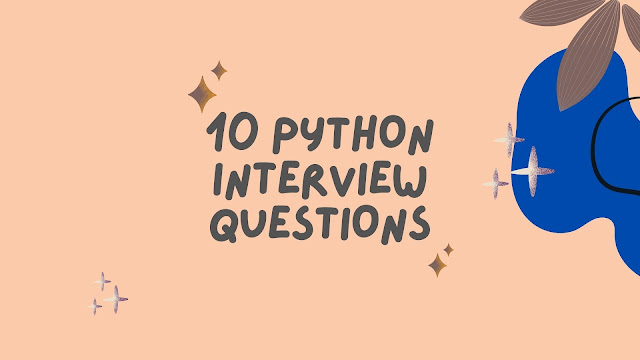Step-by-Step Guide to Reading Different Files in Python



1. What is PEP8?
PEP8 is a set of rules to format Python code for better readability. Further, you can read the user guide on PEP8.
2. What is memory management, and explain in detail?
Python manages memory automatically - cleaning, allocating, and managing; the detailed mechanism is as follows:
3. What are the different data types?
Check here more on data types.
4. What is Python Copy an object?
The '=' operator and COPY module you can use to copy objects. Here are the examples.
5. What are the various types of inheritances?
There are different types of inheritances:
Here is the example for each inheritance.
6. What are the differences between List and Tuple?
The list is mutable. But, tuple is immutable. Check out more differences between these two.
7. What is List Comprehension?
It is a concise way of creating a list and is popularly called List Comprehension.
Example:
a=[n*2 for n in range(10)]
print(a)
myList = [ num**2 for num in range(1,10) if num %2==0]
print(myList)
Python List comprehension examples.
8. What is dictionary comprehension?
The method of transforming one Dictionary into another Dictionary is called dictionary comprehension. Here are more examples of Dictionary comprehension.
9. What is slicing?
Here is the best example for the slice method.
10. What is a negative index?
Internally python assigns to '-1' for the last occurrence of a string. Python assigns a negative index (-1, -2, and so on) in reverse order. Here is the best example for a negative index.
Comments
Post a Comment
Thanks for your message. We will get back you.